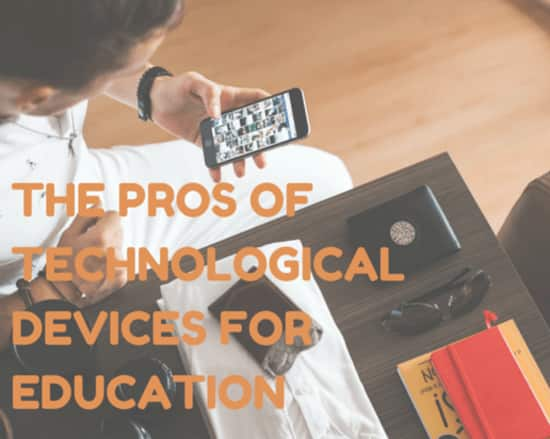The Pros of Technological Devices for Education

The Pros of Technological Devices for Education
The computer was perhaps the one device that transformed classroom education in the 20th century. As the use computers continued to expand and continues to expand today, we continue to find new and exciting ways to deliver educational programming through a platform that both engages and excites students at all levels. Consider all that is now done with computers in typical educational environments:
- Computer-assisted instruction allows students to receive direct instruction in engaging ways and to practice skills using downloaded or “in the cloud” software.
- Entire curricula are now available online for students to engage in learning when they are not physically present in a classroom. This is available for students who are “home-schooled,” for students in alternative programs in which they complete coursework entirely online, and for students who wish to complete college coursework on flexible schedules that they need because of work or other obligations.
- Students use PC’s, laptops, and tablets to conduct research for reports, essays and papers
Computers have enabled a variety of educational delivery options, with the obvious benefit being to the student who does not or cannot function in a regular classroom environment.
[WIDGET:GET_YOUR_PAPER_2]
Other Technological Devices That Have Impact
We usually think of technology as only those things related to computers. However, there are other devices that either work with computers or are stand-alone objects that have enhanced educational delivery systems:
- No older teacher will ever state that s/he misses the old duplicating machine, with its purple ink and unpleasant odor. The copier has replaced all of that unpleasantness and provides clear copies that teachers may use in a huge number of ways.
- Printers. These devices are becoming more sophisticated every year, but the idea that one can phone, fax, make copies, and print out what has been typed into a computer, was just unheard of when printers were new on the market
- Interactive whiteboards. When images are projected on such a board, students may draw, write or manipulate the images themselves – a great teaching tool.
- Digital Projectors. Mounted on the ceiling and connected to a computer, these handy little devices can project anything from a computer screen directly onto a large whiteboard or other surface.
The Pros of Technological Devices for Education of Handicapped Students
Students with severe physical disabilities were traditionally taught at home or in very specialized environments, isolated from the mainstream of classrooms in which regular educational students were taught. Thanks to new assistive technology, however, these students can now participate in regular classrooms, and their lives have been significantly changed for the better. Here are just a few devices now available to handicapped student:
- Motorized wheel chairs and stair lifts allow wheelchair-bound students full access to the school physical environment.
- Specialized keyboards and mice for students with motor control difficulties are now in use in every public school in the country
- Students who are unable to use their hands for any fine motor skills now have digital dictation devices that will automatically type what they say. So, a paraplegic student need only say, “Write my essay for me,” dictate that essay and watch as it unfolds on the computer screen, complete with proper grammar and spelling.
- For the visually impaired student, audio textbooks are available directly from the publishers and can be accessed at any point in time. Computers can project enlarged text onto white boards for far easier reading.
Technology has advanced education in wonderful ways. Students whose learning styles deviated from the traditional educational delivery structure now have those learning styles dignified; children, teens and adults who want alternative learning environments can be accommodated; students were physical disabilities can participate in a regular learning environment. And as rapidly as advances continue to be make, educational delivery will only get better.